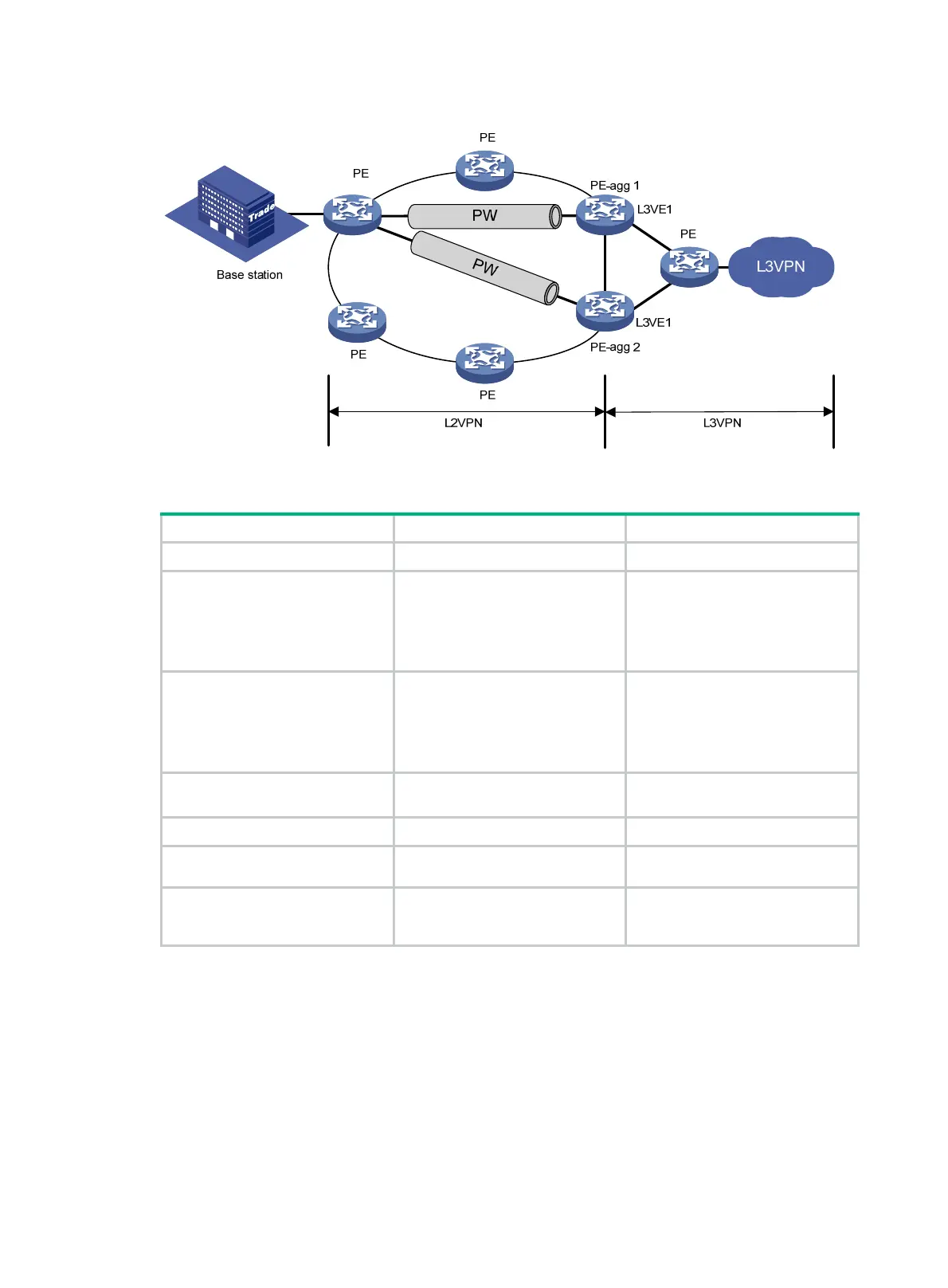221
Figure 88 Typical application
To configure the IPv6 ND suppression feature:
Step Command Remarks
1. Enter system view.
system-view
N/A
2. Configure a cross-connect
group and enter its view.
xconnect-group
group-name
By default, no cross-connect
group is configured on the device.
For more information about the
command, see MPLS Command
Reference.
3. Configure a cross-connect
and enter it view.
connection
connection-name
By default, no cross-connect is
configured on the device.
For more information about the
command, see MPLS Command
Reference.
4. Enable IPv6 ND
suppression.
ipv6 nd suppression enable
By default, the IPv6 ND
suppression function is disabled.
5. Quit cross-connect view.
quit
N/A
6. Quit cross-connect group
view.
quit
N/A
7. Enable the suppression push
function and set a push
interval.
ipv6 nd suppression push
interval
interval
By default, the ND suppression
push function is disabled.
Configuring IPv6 ND direct route advertisement
The ND direct route advertisement feature advertises host routes instead of advertising the network
route. This feature is typically configured on PE-aggs to advertise host routes to PEs in the L3VPN.
Figure 89
shows a typical application scenario where the PE in the L3VPN has ECMP routes
destined to a base station in the L2VPN. Traffic from the PE in the L3VPN to the base station can be
load shared by PE-agg 1 and PE-agg 2. If PE-agg 1 fails, the PE uses the host route through PE-agg
2 to forward traffic.

